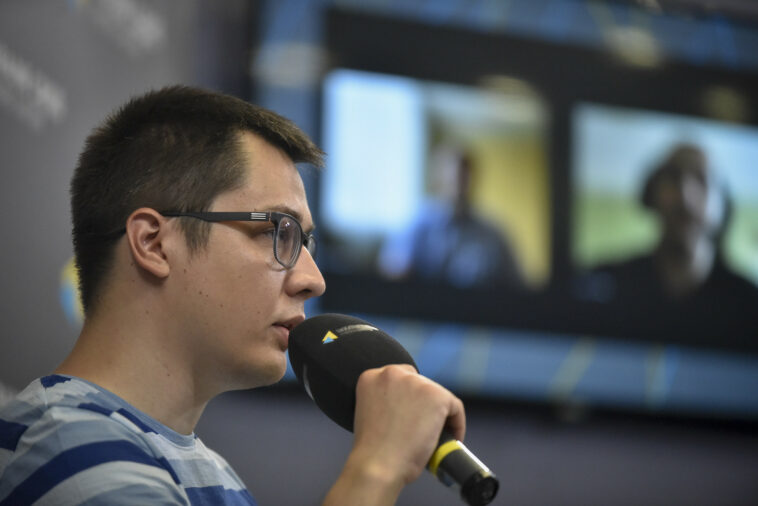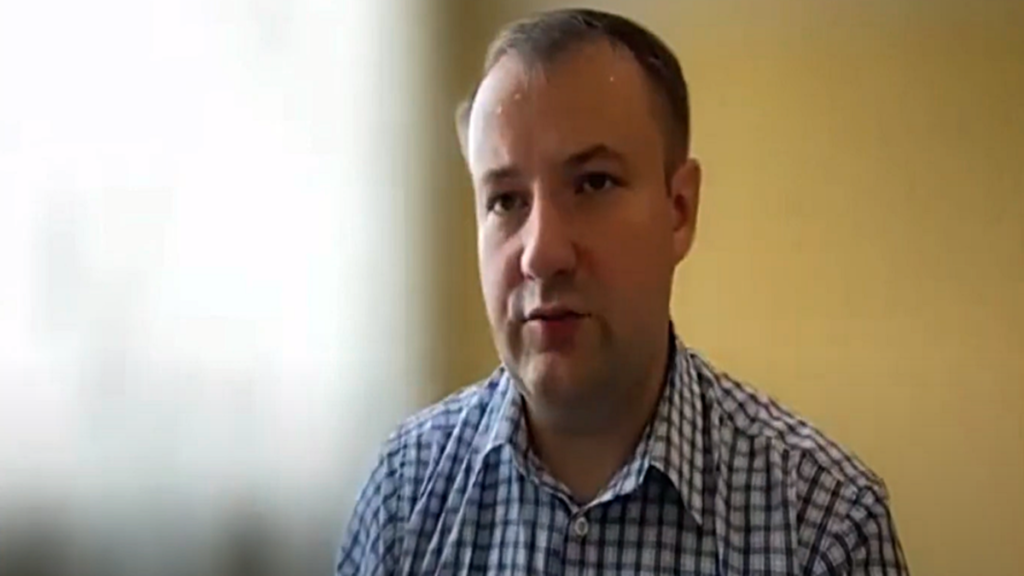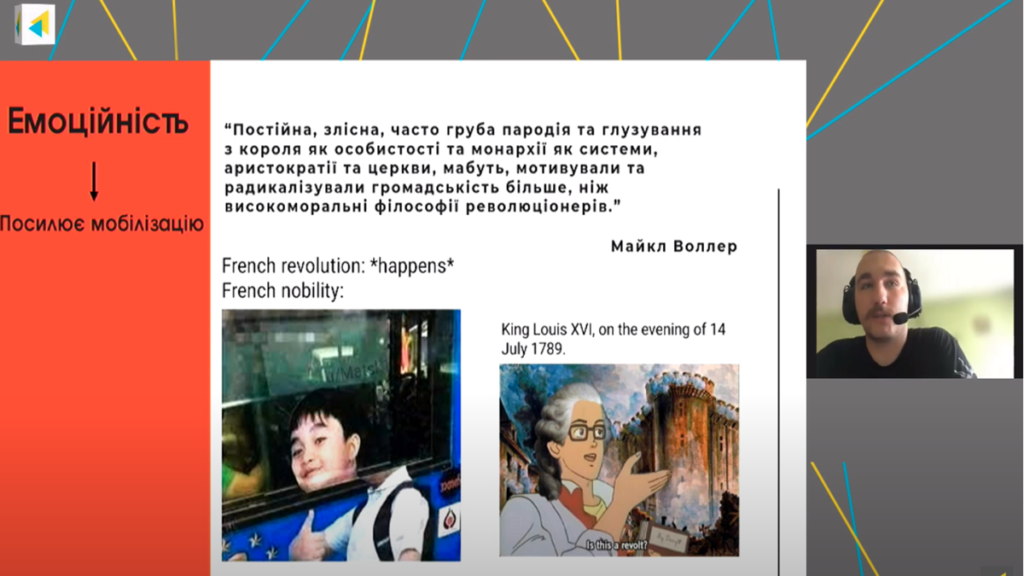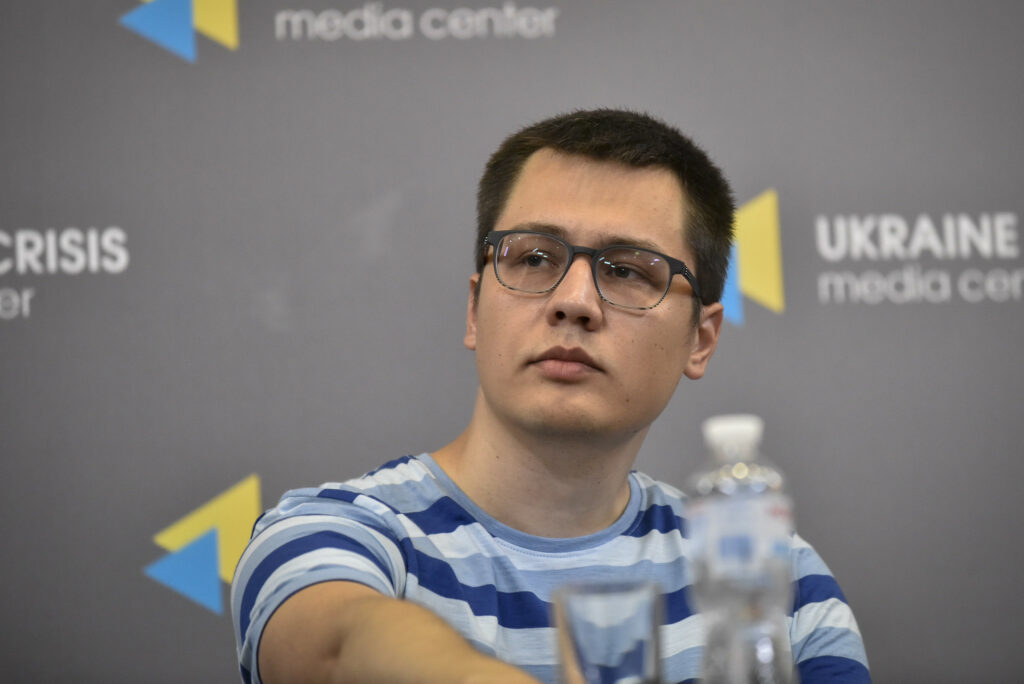Russia has long waged an information war against Ukraine, even before the conflict escalated into its hot phase. One facet of this war is the use of memes and political cartoons. In a briefing titled “Very Black Humor: Memes as a Tool of Russian Propaganda,” organized by Ukraine Crisis Media Center’s Hybrid Influence Analysis Group, experts delved into this subject to understand its mechanics and objectives.
Petro Oleshchuk, a lecturer at Taras Shevchenko National University of Kyiv and a political scientist, provided insights into the nature of memes. He emphasized that the power of memes lies in their ability not only to influence others but also to spark creativity. Memes, whether through images or statements, incite people to write reviews, comments, or modify them in various ways, thus facilitating their dissemination.
“If you manage to create a meme, you can go through the information space in a short period of time without making any additional efforts. You do not need a propaganda machine and information resources”
Petro Oleshchuk, Political Consultant
However, he also highlighted that memes inherently contain an element of ambiguity and room for interpretation. Therefore, predicting the direction a meme will take is challenging, making the meme game a delicate endeavor that doesn’t always yield expected results.
Anton Khimiak, an analyst with the Hybrid Influence Analysis Group, presented the study “Very Black Humor: Memes as a Tool of Russian Propaganda.” He classified Russian propaganda memes into three categories: simple, emotional, and contextual.
The analyst emphasized that the scope of memes is quite broad. There is even a concept of strategic humor in public diplomacy.
“Government agencies, in particular embassies, often use memes or other aspects of humor to increase the reach of their communication. Classical communication in the format of announcements, messages, news, appeals loses its effectiveness over time and reduces the audience targeted by the communication,” noted
Anton Khimiak, Analyst HWAG, UCMC
Volodymyr Solovian, senior analyst at the Hybrid Influence Analysis Group, spoke about the use of memes in the context of military propaganda.
The main tasks of military propaganda during all world wars in the twentieth century were to create a positive image of “their own” through the dissemination of “high” symbols, ruthless humiliation and ridicule of the “enemy.”
In the theory of propaganda, this is the basis for eliminating the peacetime fuse in people’s minds through visual means and setting them up for an aggressive military system, when the value of life is leveled, and the enemy is no longer perceived as a human being like you, but is replaced by a certain image.
“The narratives with which Russia entered Ukraine contradicted the classical idea of how military propaganda should be built, and this played a cruel joke on them, because when Russian troops suffered significant losses near Kyiv and in other areas, their propaganda machine was forced to rebuild and sculpt the image of the Ukrainian as an enemy on the fly”
Volodymyr Solovian, Senior Analyst HWAG, UCMC
The study also identified historical origins of images used in Russian propaganda, including caricatures from World War II, portrayals of Nazis in Allied propaganda, anti-Americanism in Soviet caricatures, and other Soviet posters.
In summary, Volodymyr Solovian outlined key narratives that Russian propaganda seeks to perpetuate through memes and political caricatures. For domestic audiences, these include portraying Ukraine as “fascist,” a “puppet of the United States,” highlighting “Ukrainian Armed Forces’ offensive failures,” emphasizing Russia’s military superiority, and ridiculing sexual minorities. External audiences are targeted with narratives such as “The US/NATO are warmongers” and “Ukraine is financed by our taxes.”





